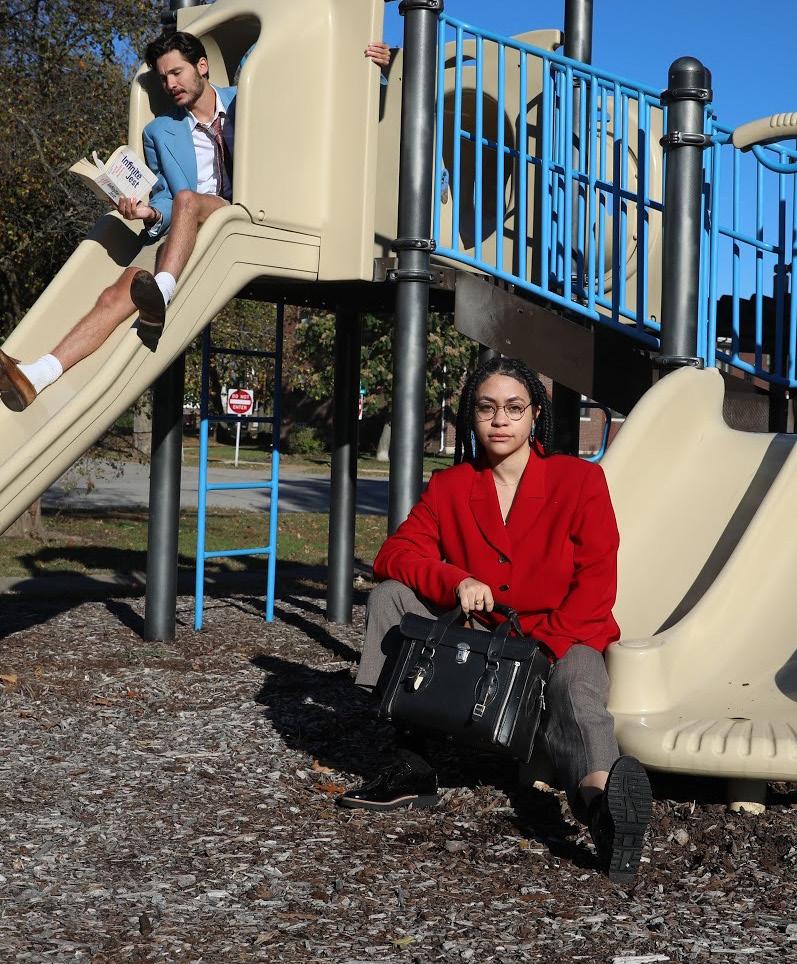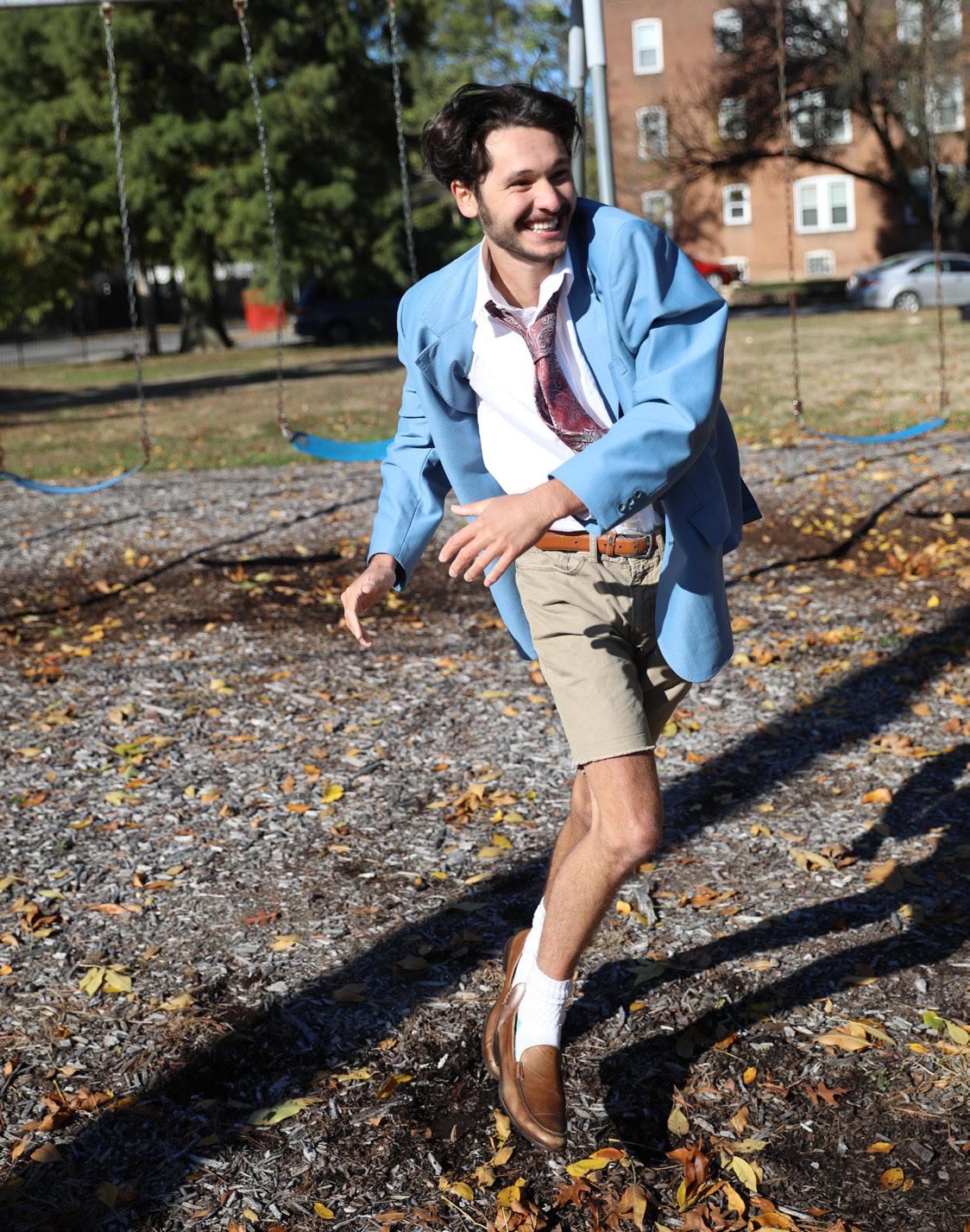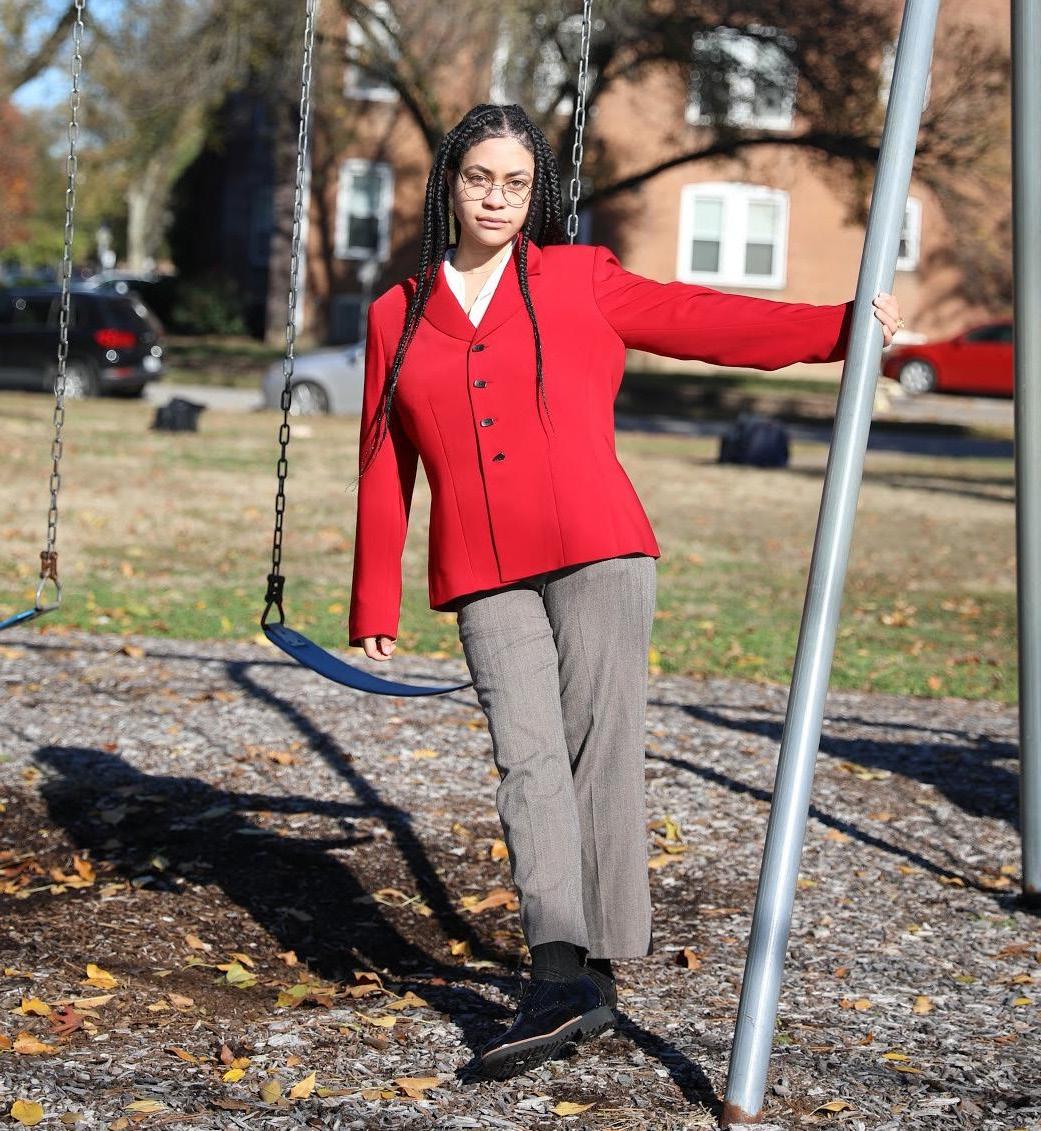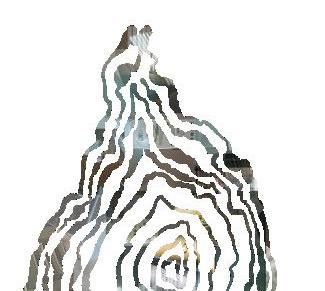
5 minute read
The Child Outside of Us
WRITING Emily Spector
EDITOR Alaina Baumoh PHOTOGRAPHY Zachary Milewicsz FEATURING Kennedy Morganfield Cole Makuch
Advertisement
On the day America closed its borders, I packed into a plane filled with evacuating students and flew home from my semester abroad. During my Dublin layover, the customs line didn’t move for three hours. I sat on my suitcase and rubbed my hands raw with disinfectant wipes, crowded between a coughing Italian girl and a couple arguing in vehement French. Flustered airport workers explained the delay was due to taking temperatures—I never saw them take anyone’s temperature—and passed out health screening forms that went uncollected. When my parents picked me up from the San Francisco airport after 20 hours of travel, we decided it would be a good idea for me to stay in my room for a couple weeks, just to play things safe. I spent two weeks, and eventually the rest of spring, almost entirely in my childhood bedroom.
At home, I slept under the floral comforter I’d picked out from a catalog at age 12. The string lights I’d pinned along my ceiling a decade ago flickered faintly, bulbs nearly dead. I reread a few of the books on my shelves, for want of anything else to do: The Phantom Tollbooth, Five Children and It, and all thirteen of the A Series of Unfortunate Events books, except one of the middle ones that I’d lent to a friend in fifth grade and never gotten back. Their yellowing, dogeared pages barely clung to the bindings after years of being passed around girl scout troops and book clubs. It felt odd to be older than all the protagonists now. I had finally grown to the age of the apathetic adults, the characters who never seemed to notice when their children vanished on otherworldly adventures.
I deep-cleaned my room at least three times. Each time I found new mementos. A crumpled pink post-it note dated February 14, 2007, with wobbly letters spelling out: “I think your pretty. From, Andrew.” A stack of Taylor Swift CDs from back when she had corkscrew curls and an exaggerated Southern accent. My sixthgrade diary, the kind with a padlock on it because I’d believed other people actually wanted to know what I wrote, even though I’m pretty sure it was mainly about how jealous I was of Maddie from English class and her perfectly straight brown hair.
In the back of my closet, lurking behind a cardboard model of a Spanish mission from fourth-grade social studies, I unearthed my senior year Homecoming Week sweatshirt. I pulled it on and was surprised to find it still fit perfectly. Most of my high school clothes did. I wore these left-behind, threadbare items daily, so as not to taint my adult clothes—my “real” clothes. I hadn’t changed as much I thought, or maybe as much as I hoped.
I broke the stay-at-home orders once and biked over to my high school track, just to go somewhere outside where I knew there wouldn’t be any people. It wasn’t anything like I remembered. The bleachers used to loom large and gleaming, blinding my eyes with flashes of California sun. Now, they looked cobwebbed and small. I’d never been to the top before, always gazing up at them from below. The sharp scent of rust stung my nose as I ascended the rickety, groaning steps. When I sat down, my shins banged against the row in front of me. A flurry of dust swirled up, making me cough. The sound was quickly swallowed up by the silence of the vacant field.
I looked out at the place where I grew up. Smoke lingered in the air, a remnant of fires encroaching nearby hills. The once verdant grass had withered to the point where I imagined it would crunch underfoot. The asphalt track below should’ve glowed an angry red, fresh with scuff marks from hundreds of children running and laughing. Instead, it looked faint and cracked.
I returned home just in time to get ready for a call with my upcoming job. It was the first time I’d needed to look presentable in weeks. When I slipped on a blouse and blazer over my sweatpants, they didn’t seem to fit right. The blouse’s silk collar choked; the blazer hung heavy and stiff across my shoulders. My fingers fumbled with the buttons.

I shuffled over to the bathroom mirror to apply makeup. As I dabbed my lips and cheeks red, a memory rose unbidden in my mind: the time I had snuck into my mom’s makeup drawer at age six and smeared her Clinique lipstick all over my face. I’d fished black pumps out of her closet and teetered this way and that across the tile floor, hands outstretched for balance, imagining I was striding through the imposing sunlit halls of my mom’s Silicon Valley law firm. I had looked in the mirror then, cherry red in the gaps between my teeth and streaking down my jaw, and thought I looked so grown-up.
Now, I looked in the mirror and saw a child playing dressup. My too-big blazer draped over my shoulders. I felt like I was younger again, but not in the way the skincare commercials say on TV. It was stomach-churning, like all the glittering nights out and blueberry pancake Saturday mornings and 2:00 AM study session tears of the past three years were a dream, one that I’d been dragged out of and back into reality. It was the same dazed, jarring feeling as the time I fell asleep in high school math class and woke up to the teacher calling on me. I’d stared at the derivative on the board, half-awake and uncomprehending as classmates around me stifled their laughter. I could visualize the exact textbook page where I’d seen the problem before, but I didn’t know the answer. Now I looked at the tall child in the mirror, and I didn’t know her either.
I wiped the lipstick off and logged onto my call. We exchanged perfunctory hellos and well wishes. “And how’s it for you in California, Emily?” someone asked.
“Oh, you know,” I said. “Good to be home.”








